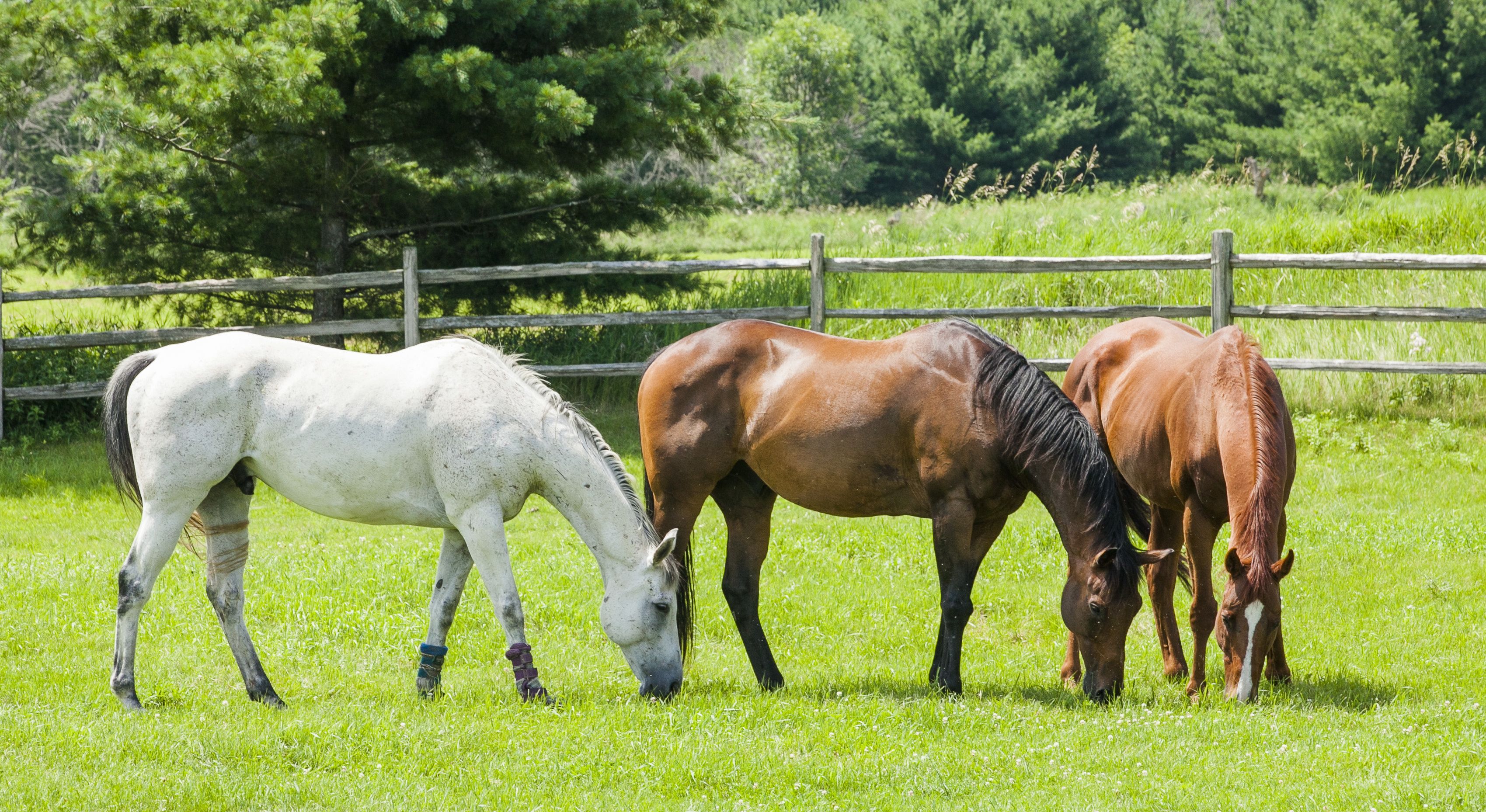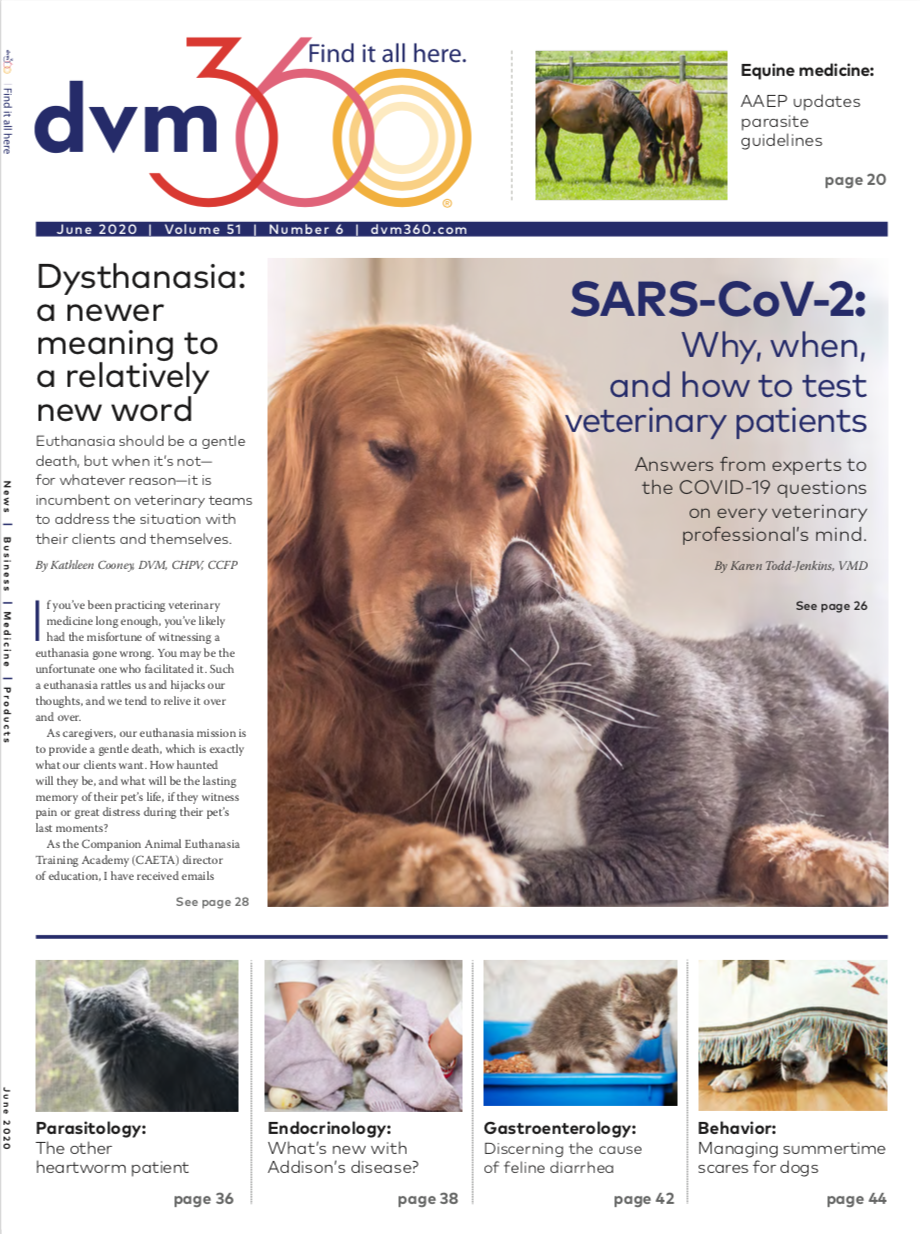Many horse owners have heard about parasite resistance from other equine professionals, members of the horse community and internet sources but may not be familiar with the most up-to-date recommendations for responsible equine internal parasite control programs. Veterinarians continue to play a key role in educating horse owners about comprehensive parasite control strategies designed to keep horses healthy and limit parasite resistance.
To help veterinarians stay abreast of current recommendations, the AAEP Infectious Disease Committee and Parasite Control Subcommittee collaborated in 2019 to update the AAEP Parasite Control Guidelines (initially published in 2013). The updated guidelines offer a concise review of clinically relevant equine intestinal parasites, explain several key terms that are central to understanding the basis of modern parasite control and highlight the following important components of a comprehensive internal parasite program:
- Methods of estimating parasite burden and degree of resistance
- Environmental measures for controlling internal parasites
- Judicious use of anthelmintic drugs (i.e. dewormers)
Assessing parasite burden
Gone are the days when blanket administration of a dewormer to every horse on a strict bimonthly or trimonthly schedule, often using a rotation of multiple classes of anthelmintics, was considered the best practice for controlling equine internal parasites. Today’s approach reflects what the equine veterinary and scientific communities have since learned: Horses, even those residing on the same property, are not uniform in their internal parasite profiles or their need for anthelmintic treatments. A major feature of modern parasite control recommendations is targeted treatment of young horses, horses showing clinical signs consistent with parasite infections and horses shedding high numbers of eggs in their feces.
Fecal egg count testing
To establish an idea of which horses are moderate or high egg shedders (relevant for devising individualized deworming plans), fecal egg counts (FECs) should be performed on fresh or recently collected and refrigerated manure samples obtained after the effective period of previously administered anthelmintics is expected to be over (typically 8 weeks post deworming for most anthelmintics). Because the intent of FEC testing is to provide information about a specific horse’s innate ability to regulate parasite burden, collecting fecal samples too soon after deworming can interfere with interpretation of basal FEC, although intentional repetition of FEC testing before and two weeks after anthelmintic administration is useful for assessing parasite resistance.
Ideally, FEC testing should be completed on all horses because the egg shedding profile is individualized for each horse (low, moderate or high shedding for adult horses; strongyle-type eggs versus ascarid eggs for young horses). Conducting several FEC tests over time may yield a more complete idea of a particular horse’s egg shedding status. However, there is evidence that an adult horse’s FEC category is typically stable given systemic health, a consistent environment and appropriate pasture management, so once an egg shedding category has been established, the usefulness of annual or semiannual FEC testing is uncertain in adult horses maintained in the same environment.
When interpreting FECs, it is important to keep the following in mind:
- Eggs of certain parasites (e.g. tapeworm, pinworm) are not readily detected in standard fecal flotation protocols.
- Large strongyle and small strongyle (i.e. cyathostomin) eggs cannot be differentiated without fecal culture to yield larvae that can then be identified, although a vast majority of strongyle-type eggs tend to be from small strongyles.
- Only patent infections, with adult female worms laying eggs into the gut lumen, will be evident.
- FEC testing can provide information about the shedding status of strongyle-type or ascarid eggs in horses, but the results should not be interpreted as reflecting the total adult strongyle or ascarid burden.
Fecal egg count reduction testing
The most widely used method for evaluating the efficacy of an anthelmintic is fecal egg count reduction testing (FECRT) to determine the number of eggs per gram of feces (epg) prior to deworming and again 10 to 14 days later.
- FECRT results can be averaged within a group of tested horses on the same property. FECRT findings should be interpreted at the farm level, not on an individual horse basis, as percentage reduction in FECs can vary widely among individuals.
- Exposure to resistant parasites should be similar among horses housed in the same environment, so it likely is not necessary to conduct FECRT on every horse on a property. However, use of post-deworming samples from at least six horses in which parasite eggs were detected prior to deworming is recommended. Horses that have resided on the property for at least one year and have the highest pretreatment egg counts should be prioritized for FECRT sample collection.
- Repeating FECRT on the same property at least every three years is suggested for reassessing anthelmintic efficacy.
Veterinarians should keep in mind that low percentage reduction in egg counts after deworming is not definitive for true parasite resistance to a particular drug, as other factors, including incorrect dose (based on inaccurate body weight estimates or due to accidental losses during administration), improper dewormer storage and use of expired anthelmintic products, may also reduce efficacy.
For properties where an anthelmintic appears to be efficacious and clients wish to be proactive, monitoring of the egg reappearance period—the amount of time between deworming and detection of strongyle eggs in feces—can be used to help anticipate the emergence of resistance. When compared with the expected egg reappearance period for a particular drug, a shorter egg reappearance period (i.e. less time elapsed between deworming and reappearance of strongyle eggs) is a harbinger of developing resistance.
Environmental parasite control measures
Many veterinarians recognize that horses with asthma often respond poorly to appropriate medications when environmental modifications are not implemented as recommended. In the same way, even the most carefully planned and executed deworming protocol can have limited efficacy and may promote parasite resistance if not combined with proper environmental control measures:
- Frequent removal of manure piles from pastures or dry lots is ideal for reducing the chance that eggs passed in feces will mature and subsequently expose grazing or browsing horses to infective life stages. However, this is not practical on all horse properties, especially those with large acreage or many horses.
- Climate should be considered when making recommendations for other environmental parasite control practices, such as rotation of pastures, as the potential benefits of pasture rotation for reducing the parasite infection risk in horses and the minimum time needed to keep horses off a pasture can vary, depending on temperature and moisture level.
- Any manure intended to be spread on pasture should first be properly composted to achieve the high temperature needed to kill parasites.
Strategic use of anthelmintic drugs
As with antimicrobial drugs, responsible use of anthelmintics is critical to extend the useful lifespan of available equine dewormers. The guidelines advocate separate approaches to deworming for adult versus younger horses.
Adult horses
In mature horses, the frequency of dewormer administration should be guided primarily by the results of individual FEC testing (i.e. targeted treatment or selective therapy) in an effort to reduce selection pressure for anthelmintic resistance.
Horses classified as low shedders (0-200 epg), which typically constitute a majority of horses in the general equine population, should receive once- or twice-yearly deworming with products predicted to be effective against small strongyles (including encysted forms), large strongyles, tapeworms and bots, along with Habronema and Draschia spp, the causative agents of summer sores.
- Timing of anthelmintic treatment should reflect seasonal patterns of parasite transmission (e.g. targeting tapeworms and bots in the late fall/early winter and encysted small strongyles at the end of the grazing season when mucosal burden is often highest); the goal of treating horses when pasture refugia is high is to facilitate maintenance of susceptible parasite populations.
- The common spring/fall deworming schedule also avoids administration of anthelmintics during periods of the year (e.g. hot summer, freezing winter) when conditions are not conducive to larval survival and transmission because of temperature extremes.
Additional dewormer treatments during the year are indicated for horses in which FECs demonstrate moderate (200-500 epg) or high (>500 epg) levels of strongyle-type egg shedding, in large part to reduce the number of eggs being released into the environment.
Young horses
Strategies for deworming young horses (<3 years of age) differ from those used for adult horses in two main ways. First, although FEC is a cornerstone of designing anthelmintic protocols for mature horses and remains important for evaluating predominant egg type (strongyle versus ascarid) as well as anthelmintic efficacy in young horses, current recommendations discourage using FEC findings to decide which young horses should be dewormed. Instead, the guidelines advocate deworming at standardized intervals, beginning at 2 to 3 months of age and continuing every three months through 1 year of age. Regardless of fecal egg densities determined by FEC testing, yearlings and 2-year-olds should be considered high shedders and dewormed three to four times per year with appropriate drugs.
To learn more...
For background information and more specifics on current equine internal parasite control recommendations, including practical aspects of designing and implementing parasite control programs, check out the current AAEP Parasite Control Guidelines, available at aaep.org/guidelines/parasite-control-guidelines.
Second, because ascarids pose a unique health threat to foals and weanlings, the medications used for the initial deworming should be efficacious against Parascaris equorum (e.g. benzimidazole class). FEC testing should be conducted prior to deworming at weaning (age 4-6 months) and at 9 months to assess whether ascarid eggs are still present or the primary target for anthelmintics has shifted to strongyles.
The potential for ascarid impaction should be considered when planning anthelmintic programs in foals, especially those with unknown prior management and deworming history. Tapeworms should also remain on the radar in young horses, and use of a cestocidal compound may be beneficial in areas where tapeworms are a recognized problem in adult horses.
Dr. Bayless is an equine veterinarian specializing in internal medicine and a PhD student at North Carolina State University College of Veterinary Medicine. She studies strategies to modulate neutrophil function with the long-term goal of identifying potential novel anti-inflammatory therapeutics for horses, other animals and humans.

